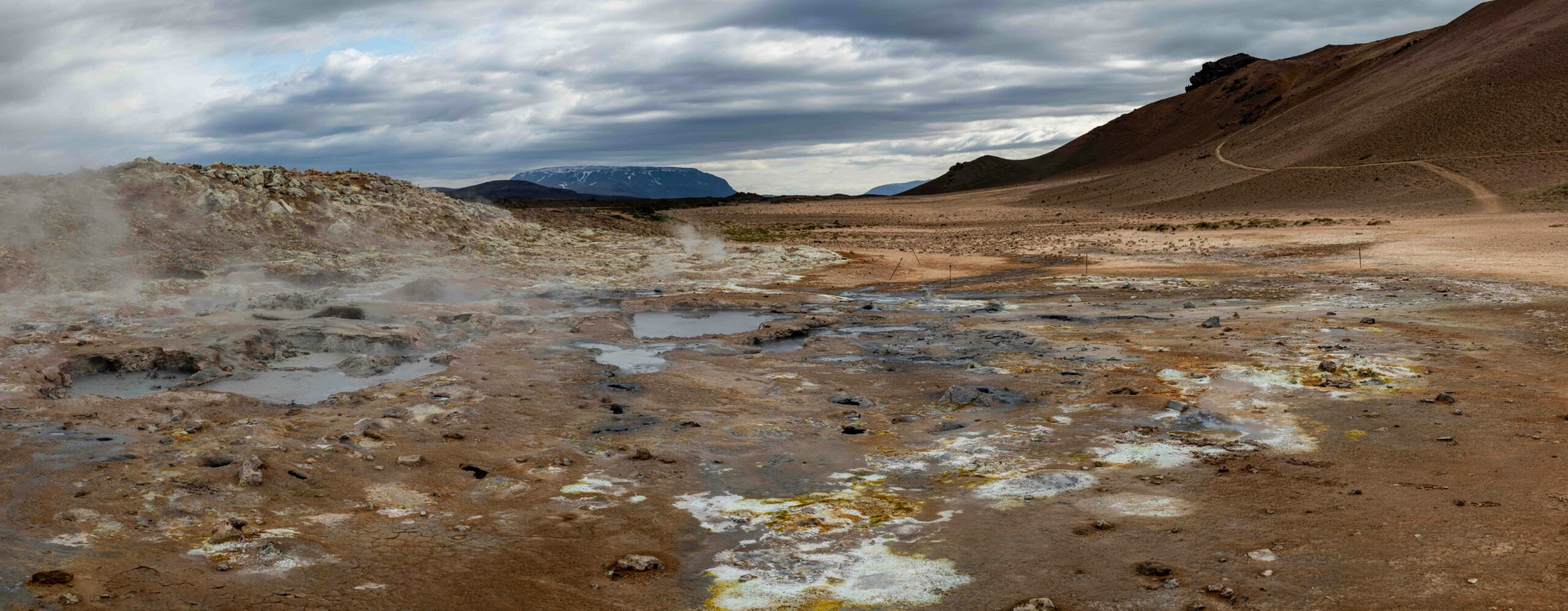
One of the most awe-inspiring natural wonders on our planet is the Great Barrier Reef, located off the coast of Australia. Stretching over 2,300 kilometers, this magnificent coral reef is home to an incredible diversity of marine life. Snorkeling or diving in the crystal-clear waters of the Great Barrier Reef is like stepping into a whole new world, where vibrant corals, colorful fish, and graceful sea turtles abound.
Another breathtaking wonder that Mother Nature has blessed us with is the Grand Canyon in the United States. Carved by the mighty Colorado River over millions of years, this colossal chasm showcases the power and beauty of geological forces. Standing at the rim of the Grand Canyon, one cannot help but feel a sense of wonder and humility as they gaze at the layers of rock that reveal the Earth’s history.
Heading to Africa, we encounter the vast Serengeti National Park, a UNESCO World Heritage Site. This expansive savannah is home to the iconic African wildlife, including lions, elephants, giraffes, and zebras. Witnessing the annual migration of wildebeests and zebras across the Serengeti is a spectacle like no other, as millions of animals traverse the plains in search of greener pastures.
Continuing our journey, we find ourselves in the Amazon Rainforest, the largest tropical rainforest in the world. With its dense canopy, vibrant biodiversity, and winding rivers, the Amazon is a true marvel of nature. Exploring this lush ecosystem reveals a myriad of unique plants and animals, some of which are yet to be discovered by scientists. The Amazon Rainforest plays a crucial role in regulating the Earth’s climate and is often referred to as the “lungs of the planet.”
As we venture into the icy landscapes of Antarctica, we encounter a world unlike any other. This frozen continent is home to a wide array of mesmerizing ice formations, towering glaciers, and adorable penguins. Explorers who brave the harsh conditions of Antarctica are rewarded with a surreal experience, where the vastness of the ice and the silence of the surroundings create a sense of tranquility and wonder.
These are just a few examples of the wonders our planet has to offer. From the majestic mountains to the vibrant coral reefs, nature never ceases to amaze us. It is our responsibility to cherish and protect these natural wonders, ensuring that future generations can also marvel at their magnificence. So, let us embark on this journey together, celebrating the beauty of nature and embracing our role as stewards of the Earth.
The Majestic Mountains
One of the most awe-inspiring wonders of our planet is its majestic mountains. From the towering peaks of the Himalayas to the rugged beauty of the Rocky Mountains, these geological formations never fail to leave us in awe. The sheer size and grandeur of mountains remind us of the incredible forces of nature that have shaped our planet over millions of years.
Mountains also provide a habitat for a diverse range of plant and animal species. The unique ecosystems found in mountainous regions are home to rare and endangered species that have adapted to survive in harsh conditions. Exploring these mountains not only offers breathtaking views but also provides an opportunity to witness the resilience and adaptability of life.
As we venture into the heart of these majestic mountains, we are greeted with a sense of tranquility and serenity. The air is crisp and clean, carrying with it the scent of pine trees and wildflowers. The sound of rushing water from nearby streams and waterfalls fills the air, creating a symphony of nature’s melodies.
As we hike along the winding trails, we come across a variety of flora and fauna that call these mountains home. The vibrant colors of alpine meadows, dotted with wildflowers in hues of purple, yellow, and red, create a breathtaking tapestry against the backdrop of snow-capped peaks. The chirping of birds and the occasional sighting of a deer or a mountain goat add to the sense of wonder and excitement.
But it is not just the beauty and diversity of these mountains that captivate us; it is also the sense of adventure and exploration that they offer. Scaling the steep slopes, navigating through narrow ridges, and crossing treacherous passes, we are pushed to our limits both physically and mentally. Yet, with each step forward, we are rewarded with stunning vistas and a sense of accomplishment.
For those seeking a more leisurely experience, there are countless opportunities to simply sit and soak in the majesty of these mountains. Whether it is finding a quiet spot by a crystal-clear lake or perching on a rocky outcrop to watch the sunset, the mountains provide a space for reflection and introspection. In these moments, we are reminded of our place in the grand scheme of things and the interconnectedness of all life on Earth.
As the sun sets behind the peaks, casting a warm golden glow over the landscape, we are filled with a profound sense of gratitude and humility. The mountains have shown us their beauty, their resilience, and their power. They have reminded us of the wonders of our planet and the importance of preserving and protecting it for future generations.
Forests are not just a collection of trees; they are complex ecosystems that support a wide variety of plant and animal life. As you wander through the forest, you may come across majestic oak trees, their branches reaching out like ancient arms, or delicate ferns, unfurling their fronds in the dappled sunlight. The forest floor is a tapestry of mosses, fungi, and wildflowers, each playing a vital role in the intricate web of life.
But it’s not just the flora that makes forests enchanting. The forest is alive with the sounds of birdsong, the rustle of leaves in the wind, and the gentle babble of a nearby stream. You may catch a glimpse of a deer gracefully bounding through the underbrush or a squirrel nimbly leaping from branch to branch. The forest is a symphony of life, a constant reminder of the interconnectedness of all living things.
Beyond their beauty, forests play a critical role in maintaining the health of our planet. They act as carbon sinks, absorbing vast amounts of carbon dioxide from the atmosphere and storing it in their trees and soil. This helps to mitigate the effects of climate change, as carbon dioxide is a greenhouse gas that contributes to global warming. By protecting and preserving forests, we can help to reduce the levels of carbon dioxide in the atmosphere and combat climate change.
Forests are also home to a staggering array of species, many of which are yet to be discovered. From the tiniest insects to the largest mammals, forests provide habitat and shelter for countless creatures. They are biodiversity hotspots, supporting a greater number of species per unit area than any other ecosystem on Earth. The loss of forests through deforestation not only threatens these species but also disrupts the delicate balance of the ecosystem as a whole.
Deforestation, driven by factors such as agriculture, logging, and urbanization, is one of the greatest threats facing our enchanting forests today. Each year, vast areas of forest are cleared, leading to habitat loss, soil erosion, and the release of stored carbon into the atmosphere. This not only contributes to climate change but also threatens the livelihoods of indigenous communities who depend on forests for their survival.
To protect and preserve our enchanting forests, we must take action. This includes implementing sustainable forestry practices, promoting reforestation efforts, and supporting initiatives that empower local communities to manage their forests sustainably. It also means making conscious choices in our everyday lives, such as reducing our consumption of products linked to deforestation, like palm oil and beef.
In conclusion, forests are not just magical places of beauty and tranquility; they are vital for the health of our planet and the survival of countless species. By recognizing the value of forests and taking steps to protect and preserve them, we can ensure that future generations can continue to experience the enchantment of these remarkable ecosystems.
The Magnificent Oceans
Our planet is predominantly covered by vast oceans that hold countless mysteries and wonders. The oceans are home to an incredible array of marine life, from colorful coral reefs to majestic whales. Exploring the underwater world allows us to witness the beauty and diversity of life that exists beneath the surface.
However, the oceans are facing numerous challenges, including pollution, overfishing, and climate change. These threats not only endanger marine life but also have far-reaching consequences for the entire planet. By understanding and appreciating the wonders of the oceans, we can work towards protecting and preserving these vital ecosystems.
One of the most fascinating aspects of the oceans is their sheer size. Covering more than 70% of the Earth’s surface, the oceans hold an incredible amount of water. The Pacific Ocean alone is larger than all the Earth’s landmasses combined, making it the largest body of water on the planet. This vast expanse of water not only provides a habitat for countless species but also plays a crucial role in regulating the Earth’s climate.
The oceans act as a massive heat sink, absorbing and redistributing heat around the globe. This process helps to regulate temperature and weather patterns, influencing everything from local climates to global climate systems. The oceans also play a vital role in the water cycle, supplying moisture to the atmosphere through evaporation and influencing rainfall patterns across the planet.
Another awe-inspiring feature of the oceans is their incredible depth. The average depth of the world’s oceans is around 12,080 feet (3,682 meters), with the Mariana Trench in the western Pacific Ocean reaching a staggering depth of 36,070 feet (10,994 meters). This makes it the deepest point on Earth. The immense pressure and darkness of the deep sea create a unique environment, home to strange and fascinating creatures that have adapted to survive in these extreme conditions.
Despite their vastness and depth, the oceans are not immune to human impact. Pollution from industrial and agricultural activities, as well as plastic waste, poses a significant threat to marine life. The accumulation of plastic debris in the oceans not only harms marine animals through entanglement and ingestion but also disrupts entire marine ecosystems. Overfishing is another major concern, with many fish populations being depleted to unsustainable levels.
Climate change is also taking its toll on the oceans. Rising sea temperatures and ocean acidification are causing widespread coral bleaching, leading to the destruction of coral reefs, which are among the most diverse and productive ecosystems on Earth. The loss of coral reefs not only affects the marine species that depend on them but also has economic and cultural impacts on coastal communities that rely on reefs for tourism and fishing.
It is crucial that we take action to address these challenges and protect the oceans. This includes reducing our use of single-use plastics, implementing sustainable fishing practices, and reducing carbon emissions to mitigate the impacts of climate change. By doing so, we can ensure that future generations can continue to marvel at the wonders of the oceans and benefit from their invaluable resources.
One such serene lake that captivates the senses is Lake Como, located in the breathtaking region of Lombardy, Italy. Surrounded by lush green hills and picturesque villages, Lake Como is a true oasis of tranquility. Its crystal-clear waters reflect the majestic snow-capped peaks of the surrounding mountains, creating a mesmerizing panorama that seems straight out of a postcard.
As you stroll along the lake’s promenade, you can’t help but be enchanted by the gentle lapping of the waves against the shore. The air is filled with a refreshing scent of pine trees, and the sound of chirping birds creates a symphony of nature’s melodies. It’s a place where time seems to stand still, allowing you to fully immerse yourself in the beauty of the moment.
But Lake Como is not just a feast for the eyes and ears; it is also a haven for a diverse range of species. The lake is home to numerous fish species, including trout and pike, which thrive in its pristine waters. Birdwatchers will delight in spotting a variety of avian creatures, from graceful swans gliding across the surface to colorful kingfishers darting through the air.
Exploring Lake Como by boat offers a unique perspective of its serene beauty. As you glide across the water, you can witness the delicate dance of light and shadow as the sun’s rays penetrate the depths below. The lake’s calm surface mirrors the surrounding landscape, creating a seamless blend of earth and sky.
Preserving the ecosystem of Lake Como is of utmost importance to the local community. Efforts are made to maintain the water’s pristine quality, ensuring the survival of its diverse aquatic life. Sustainable fishing practices are encouraged, and initiatives are in place to reduce pollution and protect the lake’s delicate balance.
Visiting Lake Como is not just a journey to a beautiful destination; it is an opportunity to connect with nature and gain a deeper appreciation for the wonders of our planet. The serenity of this lake serves as a reminder of the need to protect and cherish our natural world, so that future generations can also experience the joy and tranquility it brings.
As we venture deeper into the caves, we are greeted by the eerie silence that envelops the surroundings. The only sounds that can be heard are the distant echoes of water droplets falling from the stalactites, creating a rhythmic melody that resonates through the caverns. The air feels cool and damp, carrying with it a musty scent that is distinct to these hidden realms.
As our eyes adjust to the darkness, we begin to notice the intricate formations that adorn the cave walls. Stalactites, formed over thousands of years, hang like icicles from the ceiling, while stalagmites rise from the ground, reaching towards their counterparts above. The interplay of light and shadow creates a mesmerizing dance, casting ethereal shapes and patterns on the cave walls.
But it is not just the geological wonders that captivate us in these underground realms. The caves are also home to a myriad of unique and often elusive species that have adapted to thrive in this harsh environment. Blind cave fish, with their translucent bodies and lack of eyes, navigate through the dark waters that flow through the caves. Cave crickets, with their long antennae and elongated limbs, scuttle across the rocky terrain, their presence barely detected.
These underground ecosystems are delicate and fragile, existing in a delicate balance that can be easily disrupted. The absence of sunlight means that energy sources are limited, and organisms have had to adapt to survive in this challenging environment. Some cave-dwelling species have evolved to be entirely dependent on the resources available within the caves, forming intricate food chains that rely on the decomposition of organic matter and the flow of water through the underground channels.
As we navigate through the winding tunnels and cavernous chambers, we are reminded of the interconnectedness of all life on our planet. The caves serve as a reminder that even in the most inhospitable of environments, life finds a way to flourish. They are a testament to the resilience and adaptability of the natural world, and a humbling reminder of the vastness and complexity of our planet.




